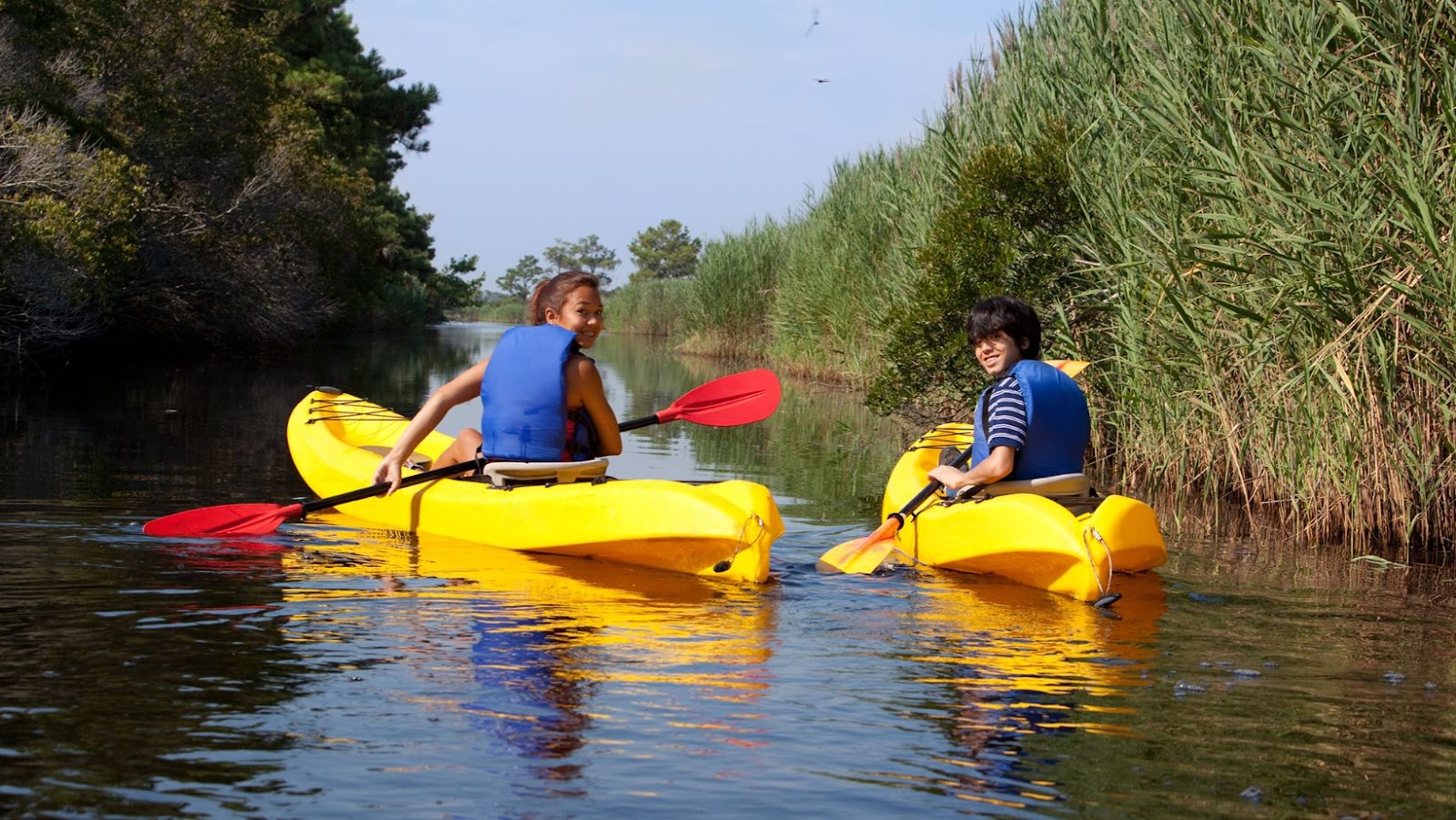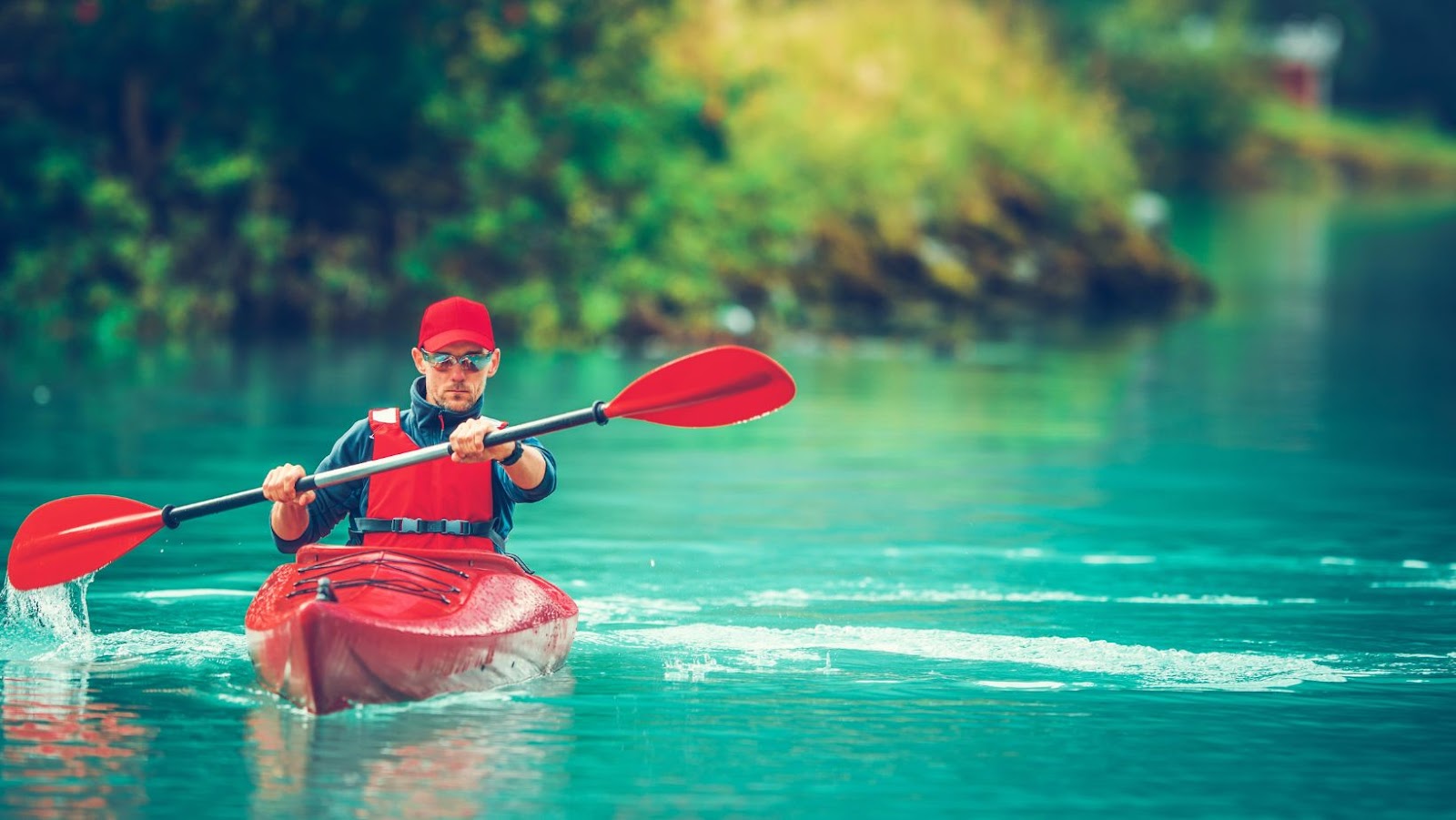
How to Dress for Kayaking
Are you ready to hit the water for a kayaking adventure? You need to make sure that you are properly outfitted for the occasion. Get the all-important tips on what to wear when kayaking, so you can have an enjoyable and safe time on your paddle.
Let’s get ready for some kayaking fun!
What to Wear on Your Feet
When it comes to what to wear when kayaking, shoes are an important consideration. Your shoes should provide adequate grip and protection on the deck of the kayak while still being comfortable enough to wear for long periods on and off the water.
A good pair of water shoes is ideal; these provide enhanced grip on wet decks and offer more foot coverage, keeping your feet protected from rocks, cuts and parasites. If you don’t have a pair of water shoes handy, you can also opt for proper fitting neoprene socks or aqua boots. Outdoor sandals can also be acceptable in certain conditions if they offer ample grip and foot protection- just be sure that there’s no way for them to be taken off easily by a rogue wave.
Regardless of which type of footwear you choose, always ensure they are secured properly with laces or straps to avoid losing them in the water.
What to Wear on Your Upper Body
When deciding what to wear when kayaking, the first thing you should consider is your upper body. What you wear depends on a number of factors, such as the temperature of the water and air and any chance of rain. Generally speaking, comfort and range of motion are key considerations when choosing clothing for kayaking.
Here is an overview of what to wear on your upper body for kayaking:
-A rash guard or short-sleeved shirt made from a synthetic fabric (such as Polyester or Lycra). This type of fabric provides protection from the sun’s UV rays, dries quickly and won’t chafe against your skin.
-A windbreaker or light jacket that zips up to protect you from chilly conditions or light rain.
-A waterproof jacket may be necessary if you expect cooler temperatures or heavy precipitation while out in your kayak. Choose a jacket that can be adjusted to better fit around your waistline, as this will add an extra layer of warmth while providing a better fit overall when paddling.
-A wide-brimmed hat helps keep the sun off your face and neck when paddling in warm weather, but make sure it is secured with a chin strap so it doesn’t fly away in case a gust of wind comes along!
What to Wear on Your Lower Body
When you’re kayaking, the clothing you wear on your lower body is important for both comfort and safety. It’s best to wear layers that can be easily removed or added as the weather and conditions change throughout your time on the water. To start, it’s important to choose clothes made of synthetic fibers or fabrics like quick-drying nylon. Natural fibers like cotton tend to stay wet and weigh you down, making it difficult to stay warm when out on the water.
For bottoms, you’ll want shorts or pants that dry quickly and come with a built-in UV protection factor (UPF). The fabric should also be loose enough for trapping extra layers of air, which acts as extra insulation in cool temperatures. It’s also a good idea to have shorts or pants with secure pockets perfect for keeping snacks in an easily accessible place while out on the water. Lastly, make sure whatever garments you choose are long enough not to ride up when seated in your kayak!
Another important piece of gear is waterproof trousers or spray skirts designed for paddling. These are particularly important for cooler seasons since they trap heat inside and help keep water from entering your boat when waves splash around your cockpit area. Neoprene wetsuits may also provide additional padding in colder conditions if you plan to spend many hours kayaking outdoors.
What to Wear on Your Head
When you are kayaking, being prepared for the weather is essential to a successful, enjoyable outing. On your head, starting with the basics, you should at least wear some form of protection from the elements. Wearing a brimmed hat or a baseball cap is best in full sun because it will shade your eyes and provide some protection against UV rays. In addition to a hat, consider wearing a bandana or light wicking headband that can protect the rest of your scalp while keeping sweat out of your eyes.
Another good option to provide more coverage and protection against sun exposure is a full-coverage sunshielding hat or cap. These usually come with wide brims and neck straps and are designed to work with life jackets as well as other kayaking gear so that you won’t worry about them being pulled off during vigorous activity or rough waves. For cooler days, choose hats in lighter materials like nylon instead of thick cotton so that they don’t soak up water and weigh you down when wet.

For colder temperatures, kayakers may find it beneficial to wear more insulated headgear such hoods or caps with ear flaps that trap heat more effectively than conventional caps and hats. To ensure an extra level of comfort while staying out on the water longer time in cooler weather choose breathable fabrics such as lightweight wool blends or fleece layers along with an outer cover layer in waterproof materials like neoprene.
What Accessories to Bring
Even with the right clothing, it’s important to also take along the right accessories when kayaking. You should have a life jacket and, depending on the weather, wet suit or pants in case you capsize. Sunglasses will help you paddle better by reducing damaging effects of sun on your eyes.
Bring water and snacks to avoid dehydration and low energy levels while paddling around. Having a sun hat, gloves, and sunscreen can also help shield you from harmful UV rays. It might be wise to carry a cell phone stored away in dry container for emergency cases as well.
What Materials are Best for Kayaking
When it comes to choosing the right clothing for kayaking, there are a few general tips to keep in mind. First and foremost, the primary goal should be staying dry and comfortable. This means focusing on materials that are not only waterproof, but also breathable, so you can avoid becoming too hot and sweaty in warm weather. Nylon and polyester blends often provide a great balance of water resistance and breathability.
Additionally, it is important to consider colors when picking out kayaking clothes as lighter colors will help keep you cooler while darker colors will retain more heat. Investing in specific pieces of clothing designed for kayaking is worth your consideration as they often include extended cut designs that allow for greater mobility, along with additional protection such as infrared patches or ultraviolet rays protection fabrics (UPF). Some items suitable for a day out kayaking may include:
- Weatherproof or waterproof outer layer or jacket
- A fleece or wool inner layer for extra warmth
- Quick-drying shorts or leggings
- Booties or neoprene shoes
- Waterproof gloves
- Goggles
- Hat with a bill or brim
What to Do if You Get Wet
If you become soaked while kayaking, it is important to change out of your wet clothes as soon as possible to avoid hypothermia. Carry a dry set of wool or synthetic clothing, like a coat and pants, as well as undergarments. Additionally, wear waterproof shoes and/or sandals that provide traction so they won’t slip off in the water if you do get wet. If water temperatures are cool (below 60•F), also bring an extra pair of warm socks.
When kayaking on a hot day stay hydrated by drinking recreational liquids and carrying snacks for energy.
Dress for Different Weather Conditions
No matter what time of year you plan to go kayaking, it’s important to dress appropriately for the weather conditions. This guide will help you stay safe, comfortable and enjoy your time on the water.
In Warm Weather: When temperatures are high and there is no risk of cooler air or precipitation, opt for lightweight and breathable clothing that will help keep you cool. Fast-drying fabrics such as nylon and polyester are ideal choices because they won’t weigh you down with moisture if they get splashed. Choose items in light colors to reflect the sun’s rays, or wear UPF-rated clothing and hats specifically designed to protect against UV exposure. You may also want to invest in a pair of overshoes that fit over your regular shoes to provide extra protection from sharp objects in the watery environment.

In Cool Weather: For colder weather conditions, dressing in several layers is key. Start by wearing a wicking base layer that helps draw moisture away from your skin and avoid overheating — merino wool is particularly effective as it retains heat well even when wet. Add an insulating midlayer such as fleece or wool; these materials should be thick enough to provide insulation but thin enough not to restrict movement while paddling or cycling through tight spots on the waterway. Finish off with a waterproof shell such as a windbreaker or raincoat that can be easily removed or added according to temperature changes throughout your adventure. Be sure to also accessorize with gloves, a beanie or scarf and other items that can keep limbs exposed during longer periods of paddling warm and dry — neoprene socks are also great for wicking away moisture during long trips out on cold days!




